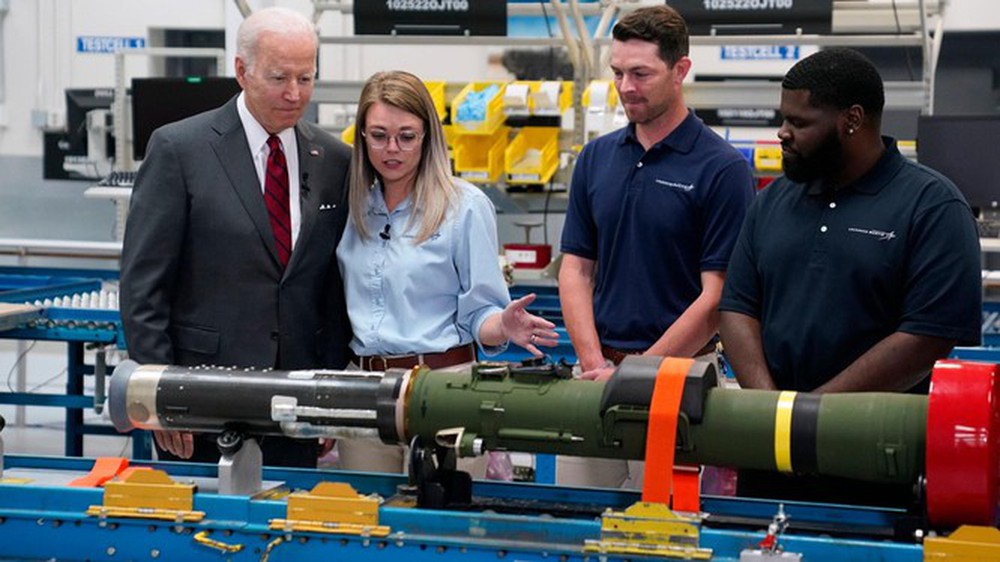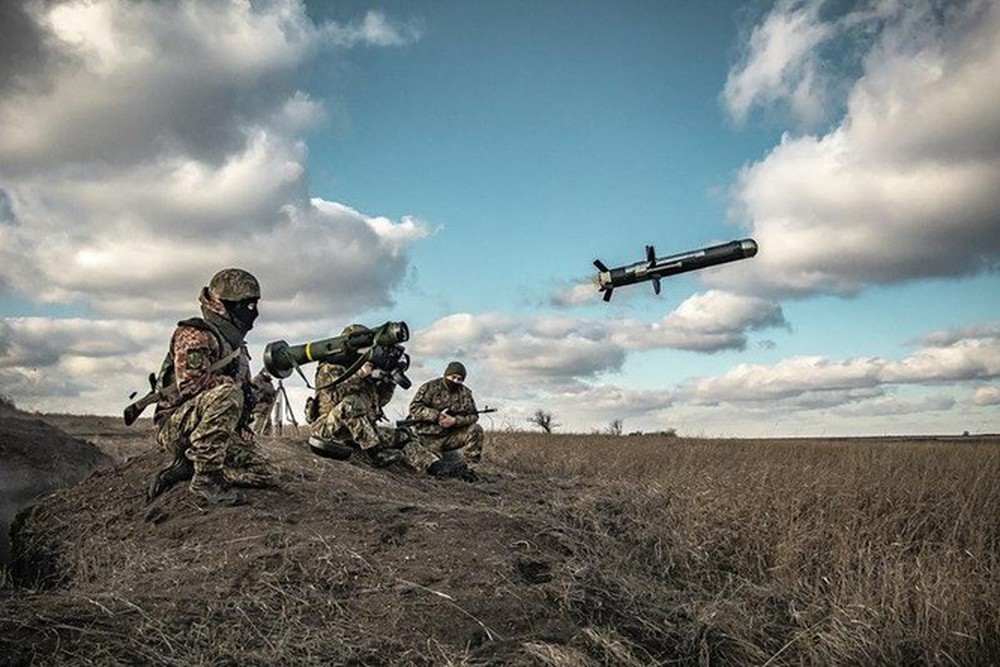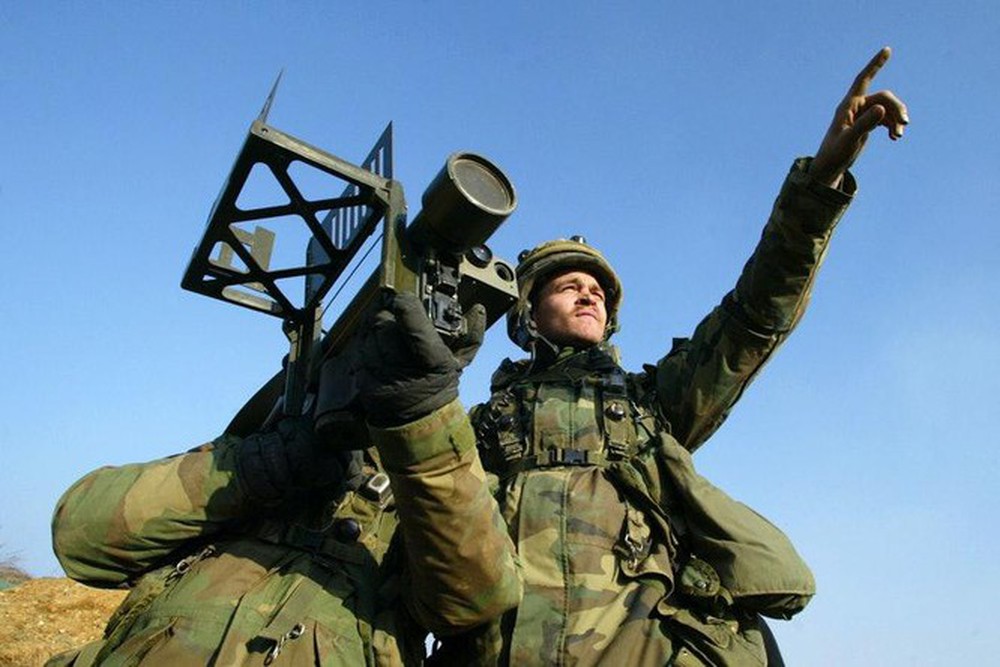
US President Joe Biden inspects the Javelin Missile Factory (Photo: AP).
On the same day, the US House of Representatives also overwhelmingly approved nearly 40 billion USD in aid for Ukraine, higher than the 33 billion USD that Biden proposed initially. This money will be used for military, humanitarian and food aid until the end of September this year.
At a time when the United States predicts Russia and Ukraine will fall into a protracted war and is preparing for it, one can consider the content of Putin’s Victory Day speech on May 9.
Before the ceremony, the outside world had predicted that Mr. Putin would declare a phased victory, thereby slowing down Russia’s “special military operation” against Ukraine, or officially declaring war on Ukraine. Ukraine, or at least issue a mobilization order to send more troops into Ukraine to ensure speeding up the war.
These two predictions, whether to reduce hostilities or increase offensives, both have in common the quickly ending the war as soon as possible. In the end, however, Putin neither declared victory nor added more troops.
This means letting the war continue with the slow advance of the Russian army and the current local counterattack of the Ukrainian army.
Although some in the West argue that with Russian equipment and supplies, it is difficult for them to fight for long, but in reality, the symbolic moment of Victory Day is ” normal day”, so the assumption that Russia is preparing for a long battle is indeed very reasonable.

On May 10, US Director of National Intelligence Avril Haines told a Senate hearing that the US assessed Mr. Putin as preparing for a long war in Ukraine. (AP)
If the aforementioned $40 billion in aid to Ukraine is approved, plus the US’s previous $13.6 billion in aid, the total amount of US aid to Ukraine would be nominally equivalent to about 80 percent of total spending. Russian military last year. If Russia continues the war, will the US be able to maintain enough aid to Ukraine?
The World Bank predicts Ukraine’s economy will shrink by up to 45% this year. Although the Ukrainian government’s tax revenues were largely maintained (aside from customs duties accounting for a quarter of lost revenue), businesses and the government continued to pay wages, the scale of the economic decline This economy has signaled an inflow of foreign capital and humanitarian aid, which is integral to the role of government.
So, although the aforementioned aid to Ukraine is high, it is not directly comparable to Russia’s military spending. In addition to maintaining the basic financial plan of the Ukrainian government, to help Ukraine win, it is more important to support weapons and equipment from outside.
According to information released by the US State Department on May 10, the US military aid to Ukraine so far has been very comprehensive, including: more than 1,400 Stinger anti-aircraft missiles, more than 5,500 Javelin anti-tank missiles, more than 14,000 other anti-armor systems, more than 800 “suicide drones”, 90 155mm howitzers and 500,000 shells, 16 Mi-17 helicopters, hundreds of armored vehicles, 200 armored vehicles M113 country, more than 7,000 small arms, more than 50 million bullet rounds, laser-guided missile system, Puma 3-AE unmanned aerial vehicle system, unmanned coastal defense ship, 17 radars anti-cannon, 4 anti-mortar radars, two mine surveillance radars, etc.
The question is, how long will such large-scale aid last?

The US has provided Ukraine with more than 5,500 Javelin anti-tank missiles.
Stinger anti-aircraft missiles and Javelin anti-tank missiles, which performed well in the early days of the war, constituted a significant part of the US military’s inventory and were difficult to rapidly ramp up production in time. short.
According to analysis by Mr. Mark F. Cancian, senior adviser of the International Security Program at the Center for Strategic and International Studies (CSIS), one-third of the US Javelin missile stockpile has been transferred. for the Ukrainian army.
Previously, the US only bought about 1,000 Javelin fruits per year. Although the maximum production capacity in the US can reach 6,480 fruits per year, it will take more than a year to increase to this level and the delivery time is up to 32 months, it can be said that “far water does not put out the fire. near to”.
So far, the number of Stinger missiles supplied by the US to Ukraine has accounted for a quarter of the country’s inventory.
Since 2003, the US Army has not ordered Stinger missiles and their factory has existed for many years because they have requested a very small quantity from overseas buyers (rumored to be Taiwan), while the Department of Defense The US has long planned to work on another type of short-range air defense missile.
Mr. Cancian estimates it will take more than two years to get production capacity back up. Gregory Hayes, chief executive officer of Raytheon, the company that makes the Stinger, said the rocket needed a redesign because some parts are no longer commercially available.
In addition to existing production restrictions, labor shortages, supply chain problems, and even sanctions against Russia itself have limited U.S. weapons production.
The US National Defense Industry Association (NDIA) pointed out that the industry currently faces two major problems, one is the lack of human resources in the US (there are not enough specialized staff), the other is the limitations. about the supply chain.
According to the association’s data, among the top 100 defense contractors listed, the time from component purchase to finished product delivery has increased from 56 days in 2019 to 128 days in 2020. supply chain problems have severely affected America’s ability to accelerate weapons production.

US Commerce Secretary Gina Raimondo: Each Javelin missile requires up to 250 chips.
At the same time, 37% of the annual supply of titanium metal in the United States comes from Russia and Ukraine, and some major supply types account for more than half of imports from Russia. Currently, Japanese companies that can supply high-quality titanium have almost exhausted their production capacity; While the aviation industry is recovering, other US military companies are still competing with Boeing for titanium supplies from outside Russia.
The chip supply is also likely to hamper production. US Commerce Secretary Gina Raimondo last month told Congress that a Javelin launch system would require more than 250 chips.
Earlier, top US defense officials held a meeting with the leaders of the giants of the military industry to discuss the issue of supplying weapons to Ukraine, and to discuss issued a “consultation request” to military-industrial companies across the country, in the hope that they would provide information on the types of weapons Ukraine needed to produce the products it could produce.
As of 7/5 they have received more than 300 responses. Thereby, it can be seen that the US authorities are actively looking for ways to ensure a stable and long-term supply of weapons to Ukraine.
Conrad Crane, a historian at the Army War College, recently wrote an article pointing out that existing US war plans only envisage “operations”. military force relatively quickly and with few casualties”, “resources for long and fierce conflicts have been dwindled or forgotten”.
He criticizes that people’s war fantasies are often based on rapidly defeating an enemy with high-tech weapons like the F-35, unprepared for a long and intense war of attrition – He cites the example that the US has rapidly consumed its missile stockpile in the fight against ISIS as proof of this shortcoming.

Currently, the US does not meet Ukraine’s demand for Stinger anti-aircraft missiles.
In addition to current military aid to Ukraine, Biden not only signed the “Defense Leasing Act,” passed by both houses of Congress and based on World War II law, so that the U.S. government could supply weapons to Ukraine. faster gas for Ukraine, but also using the term “arsenal of democracy” that President Roosevelt Jr. used in his fireside conversation in December 1940 to describe American objectives.
During World War II, however, private manufacturers in the United States rushed to invest in wartime production just enough to supply Europe with supplies. For example, the American auto industry accounted for a fifth of arms production during World War II. Does America still have this ability today?
Naturally, the Russo-Ukrainian war could not be compared with the Second World War. But the arms supply concerns caused by this war are supposed to be a lesson for American defense policymakers.
at Blogtuan.info – Source: Soha.vn – Read the original article here



